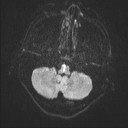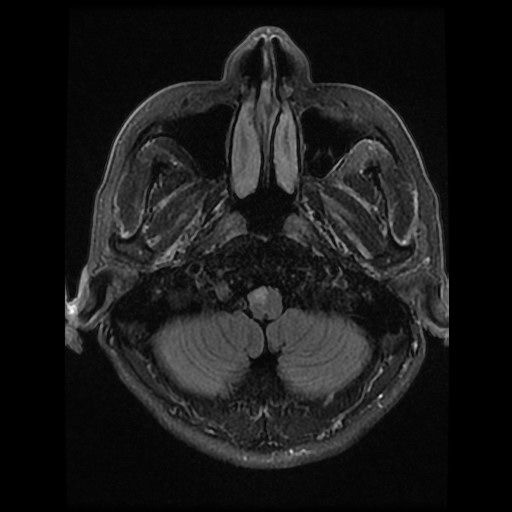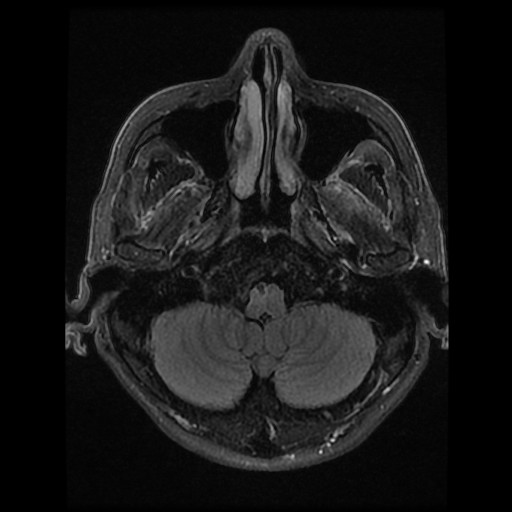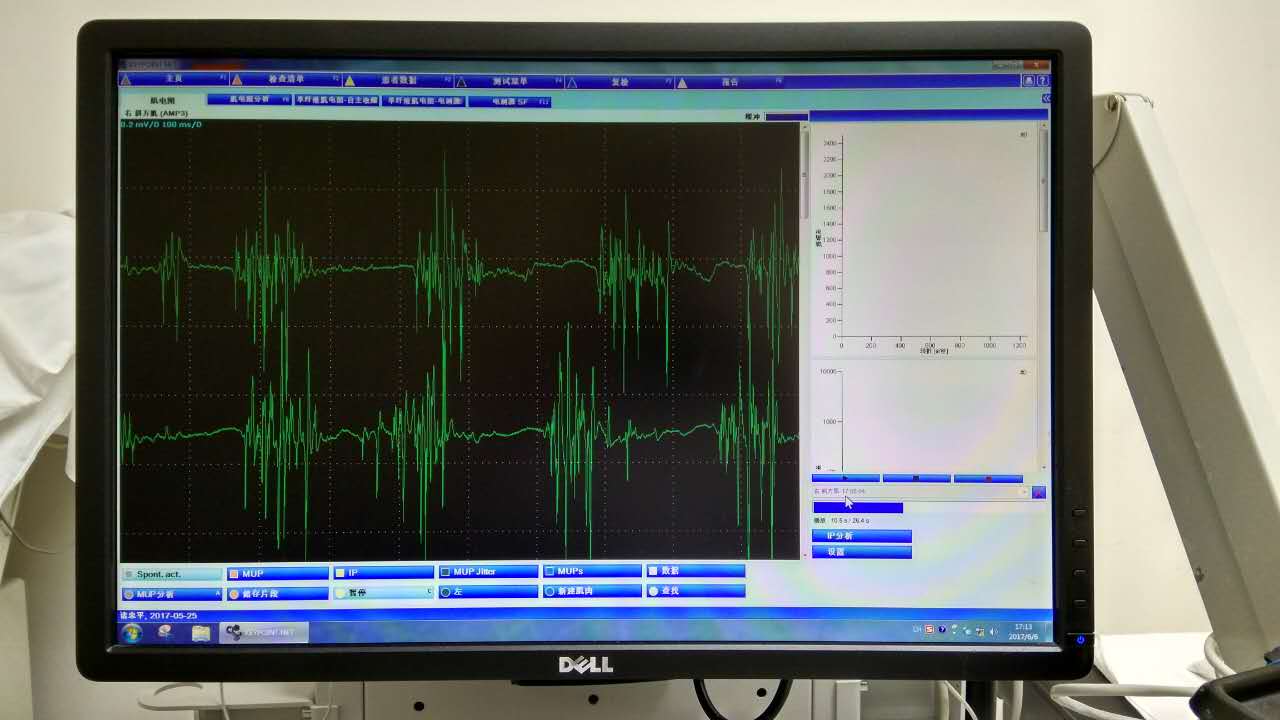Session Information
Date: Sunday, October 7, 2018
Session Title: Tremor
Session Time: 1:45pm-3:15pm
Location: Hall 3FG
Objective: Describe a patient with cervical dystonic tremor after medial medullary infarction.
Background: Tremor could develop after midbrain or pontine infarction with delayed onset. Tremor after medullary infarction was rarely reported and the pathogenesis were not fully understood.
Methods: We reported a case of a patient with cervical dystonic tremor after medullary infarction. Clinical features, neuroimaging findings and treatment results were described.
Results: A 57-year-old man presented with the medial medullary infarction on 2016-8-21 with sudden onset vertigo, vomiting and left hemiplegia. Examination reviewed 3/5 muscle power in left upper and lower extremities, left Babinski sign(+), and hyposthesia in the left extremities. Brain MRI revealed right ventral and internal medulla infarction[Figure 1]. CTA and DSA showed occlusion of V4 part of the right vertebral artery. 3 weeks after the onset of stroke, the patient began to have slight tremor of the neck, with involuntary neck rotation to the right. The symptom exacerbated gradually. 6months after stroke, he came to our outpatient clinic once again. He complained that the tremor would exacerbate with certain posture or action like lifting his right arm to brush teeth or to put a cigarette to the mouth. We could also see a “no-no” tremor of his head. Tremor of the extremities or palate tremor was not found. Examination showed slight hemiparesis of the left extremities with slightly raised muscle tone of the left arm. A second head MRI was performed on 2017-3 which showed a low-T1, low-T2 sequal change in the former infarction site and a high-T2 lesion below the infarction lesion[Figure 2,3]. An electromyogram of the right trapezius muscle showed ~4Hz muscle cramping[Figure4]. Regular phamacal therapy like benzhexol, baclofen, clonazepam had have little effect on his tremor. This patient received local botulinum toxin injection therapy and the tremor symptom improved.
Conclusions: It is possible that destruction of olivocerebellar pathway due to medial medullary infarction causes abnormal output of Purkinje cells and thus leads to the dystonic tremor in this patient.
References: 1. LeDoux MS, Brady KA. Secondary cervical dystonia associated with structural lesions of the central nervous system. Mov Disord. 2003;18:60-9.
To cite this abstract in AMA style:
Q. Wang, S. Wu, J.H. Dong, L.R. Jin, G. Deuschl. Secondary dystonic tremor after medial medullary infarction [abstract]. Mov Disord. 2018; 33 (suppl 2). https://www.mdsabstracts.org/abstract/secondary-dystonic-tremor-after-medial-medullary-infarction/. Accessed April 1, 2025.« Back to 2018 International Congress
MDS Abstracts - https://www.mdsabstracts.org/abstract/secondary-dystonic-tremor-after-medial-medullary-infarction/




